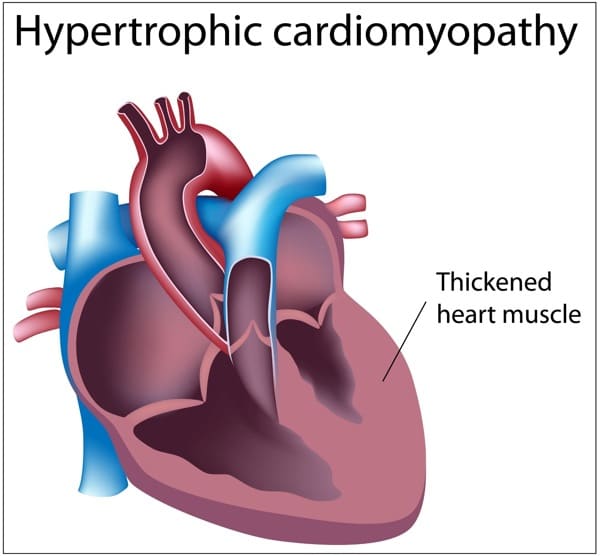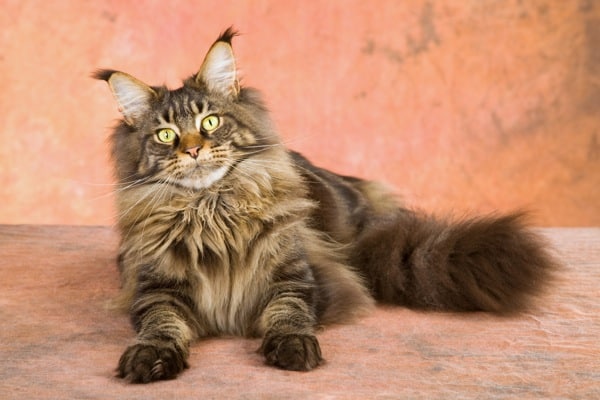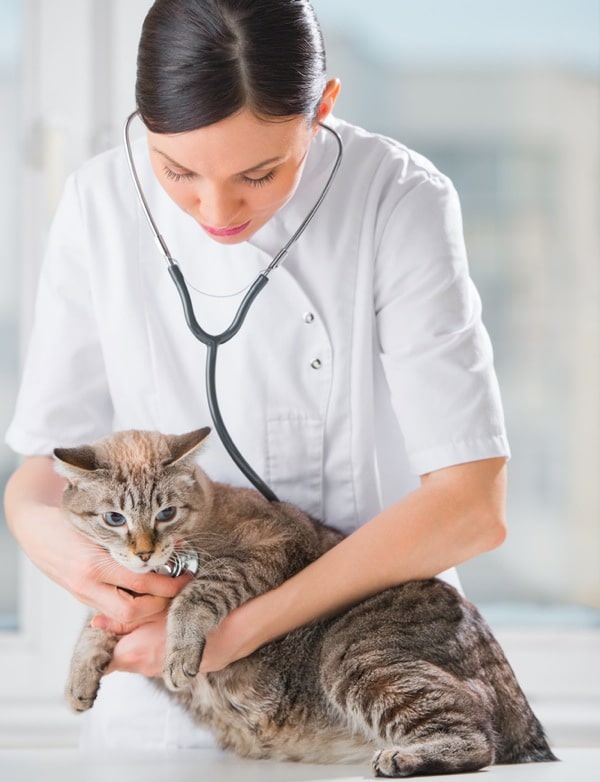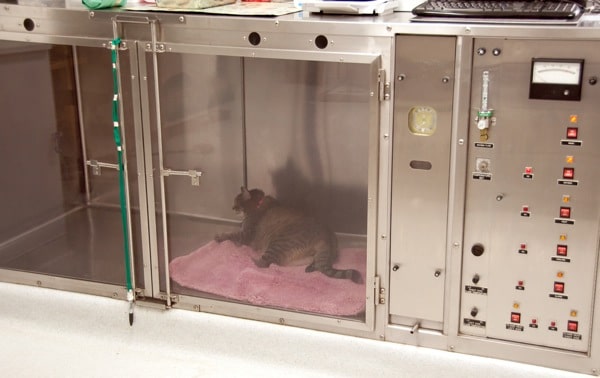One day I walked into my vet clinic for my cat’s regular checkup. In the back room I could hear lots of action and a cat screaming in terror and pain. I’d waited about 15 minutes for the vet to come in for my cat’s exam when one of the receptionists arrived. “I’m sorry for the wait,” she said. “but an emergency came in just before you got here. They’re working on a cat that threw a clot.”
“No problem. I totally understand,” I said. “If my cat were having an emergency, I’d expect the same treatment.”
I have no idea what the outcome of the cat’s treatment was, but when I went back home and researched blood clots in cats, I found out that the most common cause was hypertrophic cardiomyopathy, also known as HCM, a disease that even the most conscientious cat caretakers and vets might not be able to discover until the cat has a health crisis. Here are some things you might not have known about the most common heart disease in cats.

1. What happens in hypertrophic cardiomyopathy
You probably remember from science class that the heart is a muscle and it has four chambers, two atria and two ventricles. In HCM, the muscles of the left ventricle, which is responsible for pumping oxygenated blood from the heart to the rest of the body, enlarge and become abnormally thick. This overgrowth reduces the heart’s ability to squeeze and relax, thereby causing less blood to be pumped to the body.
2. The causes of HCM are largely unknown
A genetic mutation or predisposition can lead to hypertrophic cardiomyopathy — this is best documented among Maine Coons and Ragdolls — but for most cats, the cause remains a mystery.

3. It occurs mostly in middle-aged cats
HCM is most often found in cats between the ages of five and seven years. In older cats, cardiomyopathy may be caused by hyperthyroidism or high blood pressure. In these cases, the progression of the disease can be halted by appropriate treatment.
4. The first sign may be a heart murmur
Because HCM affects the heart’s ability to pump blood, some of the blood from the enlarged ventricle may swish back into the left atrium, which causes a sloshing sound veterinarians refer to as a murmur. Heart murmurs are graded on a scale from I to VI, with I being barely audible with a stethoscope and VI being so loud you can hear it with a stethoscope barely touching the cat and sometimes causing vibration throughout the chest cavity. For more information on heart murmurs, go here.

5. As the disease advances, more serious symptoms can occur
Symptoms of HCM such as lethargy and loss of appetite can mimic that of many other diseases. But clues related to a heart problem include limited exercise tolerance, odd heart sounds, difficulty breathing, weak pulse and a bluish discoloration of the paw pads and nail beds due to poor circulation. In a crisis, a cat with HCM may collapse, develop congestive heart failure, or throw a blood clot that blocks the artery that provides the blood supply to the rear end, like the cat I mentioned above.
6. Two primary tests are used to diagnose HCM
If a cat goes to the vet presenting the above symptoms, your vet will do an X-ray or ultrasound to determine the degree of thickening of the ventricle wall. He or she may also do an electrocardiogram (EKG) to determine what is going on with the electrical signals your heart is sending to create its rhythm.

7. HCM is incurable, but it can be managed
Although HCM is a progressive disease — it will get worse over time — a number of medications are used to manage the symptoms. These include medications to manage the heart rate, alleviate congestive heart failure and eliminate fluid buildup in the body, prevent blood clotting and improve the flow of blood from the heart.
8. Research on HCM is ongoing
The Winn Feline Foundation is doing extensive research into HCM, which is being supported by its Ricky Fund, which was started by nationally syndicated pet columnist Steve Dale. To learn more about the Ricky Fund, go here.
Do you have a cat with hypertrophic cardiomyopathy? How are you and your vet working to keep your kitty as healthy as possible? Please share your story in the comments.
About JaneA Kelley: Punk-rock cat mom, science nerd, animal shelter volunteer, and all-around geek with a passion for bad puns, intelligent conversation, and role-play adventure games. She gratefully and gracefully accepts her status as chief cat slave for her family of feline bloggers, who have been writing their cat advice column, Paws and Effect, since 2003. JaneA dreams of making a great living out of her love for cats.







